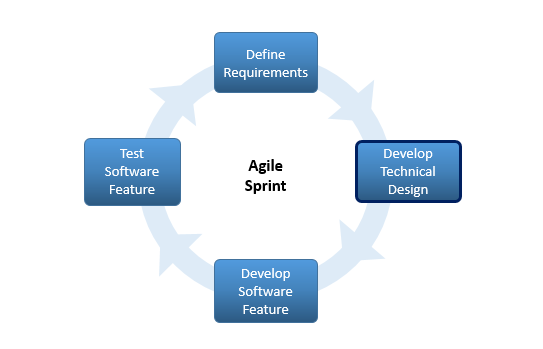The Influence of Agile Style on Modern Product Advancement
페이지 정보

본문
Intro
Today's hectic market demands flexibility, and Agile design and development Style goes to the forefront of developing user-centered, flexible items. By merging nimble methodologies with a design-led frame of mind, Agile Style motivates groups to generate items quicker, maximize for quality, and adjust to customer demands. Companies seeking to remain affordable advantage considerably from taking on Agile Layout concepts.
 Agile Style Explained
Agile Style Explained
Agile Style incorporates agile techniques with style reasoning. It leverages the dexterous development structure's iterative method, focusing on fast feedback cycles and user-focused changes. This structure permits layout and development groups to test, adapt, and improve their products effectively.
Core Elements of Agile Layout
Empathy for Users: An essential aspect of Agile Style is empathy, making sure that products attend to individuals' authentic demands. This attitude drives the entire style procedure.
Prototyping and Examining: By developing quick models, teams can swiftly verify concepts. Evaluating these models helps them make adjustments, which can minimize the possibility of costly mistakes.
Collective Society: Agile Design prospers on a collective setting. Cross-functional teams, including designers, programmers, and stakeholders, interact to make educated choices.
Adaptability: Agile Design highlights the ability to pivot and make changes as understandings from testing and user responses been available in.
Benefits of Utilizing Agile Style
Agile Style speeds up development timelines, permitting teams to swiftly launch variations that can be repeated upon. This process develops a faster path to individual responses, boosting the product's functionality and significance.
Steps to Execute Agile Design
To get begun, bring all groups with each other from the task's inception. Usage brief style sprints to concentrate on details attributes, allowing rapid prototyping and responses. This technique will cause a product that is not only useful yet also user-centric and premium.
Today's hectic market needs versatility, and Agile Layout is at the forefront of creating user-centered, flexible items. By merging dexterous methodologies with a design-led frame of mind, Agile Style encourages groups to create products much faster, maximize for top quality, and adjust to user demands. Organizations seeking to remain competitive advantage dramatically from embracing Agile Style principles.
Agile Style integrates active methods with style reasoning.
Today's hectic market demands flexibility, and Agile design and development Style goes to the forefront of developing user-centered, flexible items. By merging nimble methodologies with a design-led frame of mind, Agile Style motivates groups to generate items quicker, maximize for quality, and adjust to customer demands. Companies seeking to remain affordable advantage considerably from taking on Agile Layout concepts.
 Agile Style Explained
Agile Style ExplainedAgile Style incorporates agile techniques with style reasoning. It leverages the dexterous development structure's iterative method, focusing on fast feedback cycles and user-focused changes. This structure permits layout and development groups to test, adapt, and improve their products effectively.
Core Elements of Agile Layout
Empathy for Users: An essential aspect of Agile Style is empathy, making sure that products attend to individuals' authentic demands. This attitude drives the entire style procedure.
Prototyping and Examining: By developing quick models, teams can swiftly verify concepts. Evaluating these models helps them make adjustments, which can minimize the possibility of costly mistakes.
Collective Society: Agile Design prospers on a collective setting. Cross-functional teams, including designers, programmers, and stakeholders, interact to make educated choices.
Adaptability: Agile Design highlights the ability to pivot and make changes as understandings from testing and user responses been available in.
Benefits of Utilizing Agile Style
Agile Style speeds up development timelines, permitting teams to swiftly launch variations that can be repeated upon. This process develops a faster path to individual responses, boosting the product's functionality and significance.
Steps to Execute Agile Design
To get begun, bring all groups with each other from the task's inception. Usage brief style sprints to concentrate on details attributes, allowing rapid prototyping and responses. This technique will cause a product that is not only useful yet also user-centric and premium.
Today's hectic market needs versatility, and Agile Layout is at the forefront of creating user-centered, flexible items. By merging dexterous methodologies with a design-led frame of mind, Agile Style encourages groups to create products much faster, maximize for top quality, and adjust to user demands. Organizations seeking to remain competitive advantage dramatically from embracing Agile Style principles.
Agile Style integrates active methods with style reasoning.
- 이전글9 Things Your Parents Taught You About Bio Ethanol Fireplace Free Standing 24.11.21
- 다음글20 Things You Should Ask About Address Collection Before Purchasing It 24.11.21
댓글목록
등록된 댓글이 없습니다.